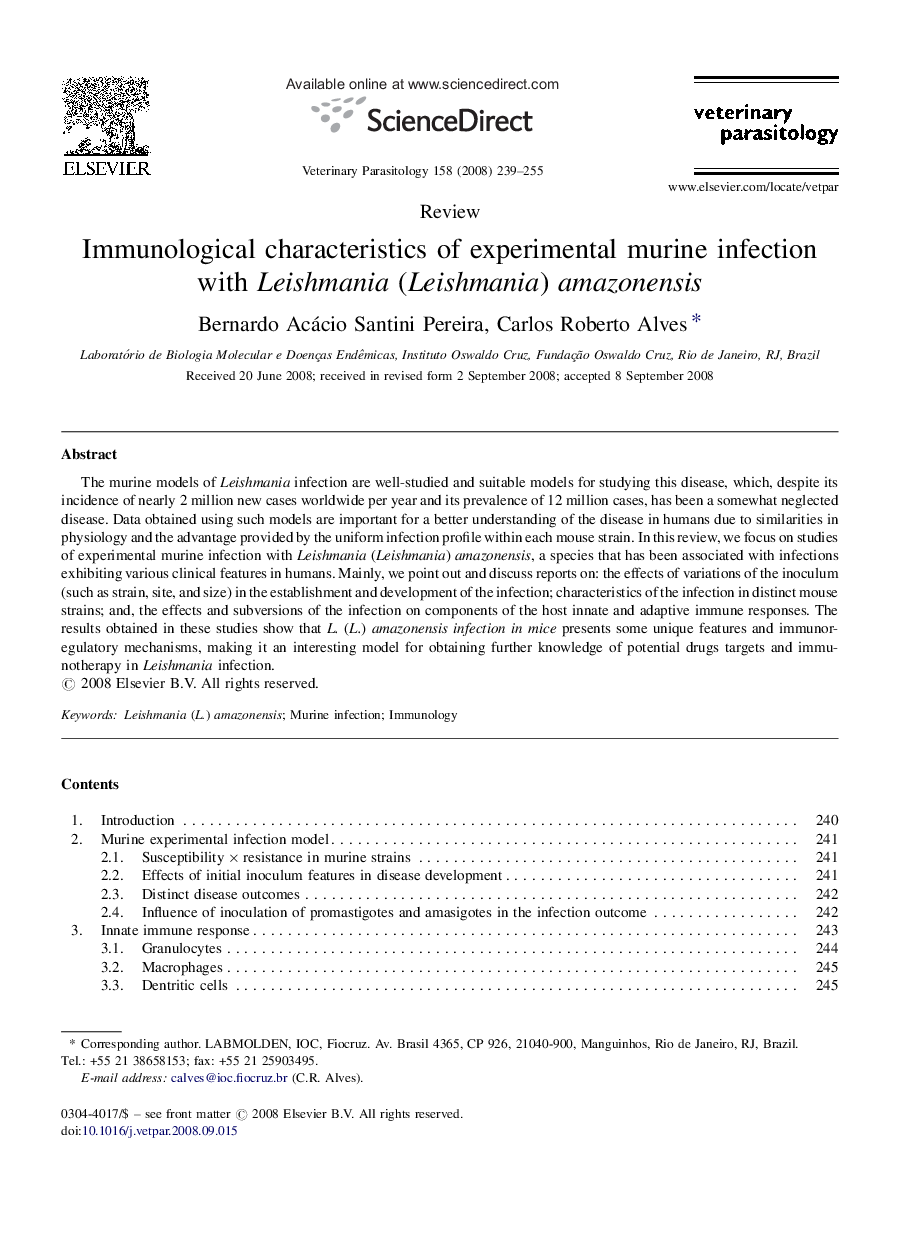| Article ID | Journal | Published Year | Pages | File Type |
|---|---|---|---|---|
| 2471248 | Veterinary Parasitology | 2008 | 17 Pages |
The murine models of Leishmania infection are well-studied and suitable models for studying this disease, which, despite its incidence of nearly 2 million new cases worldwide per year and its prevalence of 12 million cases, has been a somewhat neglected disease. Data obtained using such models are important for a better understanding of the disease in humans due to similarities in physiology and the advantage provided by the uniform infection profile within each mouse strain. In this review, we focus on studies of experimental murine infection with Leishmania (Leishmania) amazonensis, a species that has been associated with infections exhibiting various clinical features in humans. Mainly, we point out and discuss reports on: the effects of variations of the inoculum (such as strain, site, and size) in the establishment and development of the infection; characteristics of the infection in distinct mouse strains; and, the effects and subversions of the infection on components of the host innate and adaptive immune responses. The results obtained in these studies show that L. (L.) amazonensis infection in mice presents some unique features and immunoregulatory mechanisms, making it an interesting model for obtaining further knowledge of potential drugs targets and immunotherapy in Leishmania infection.
